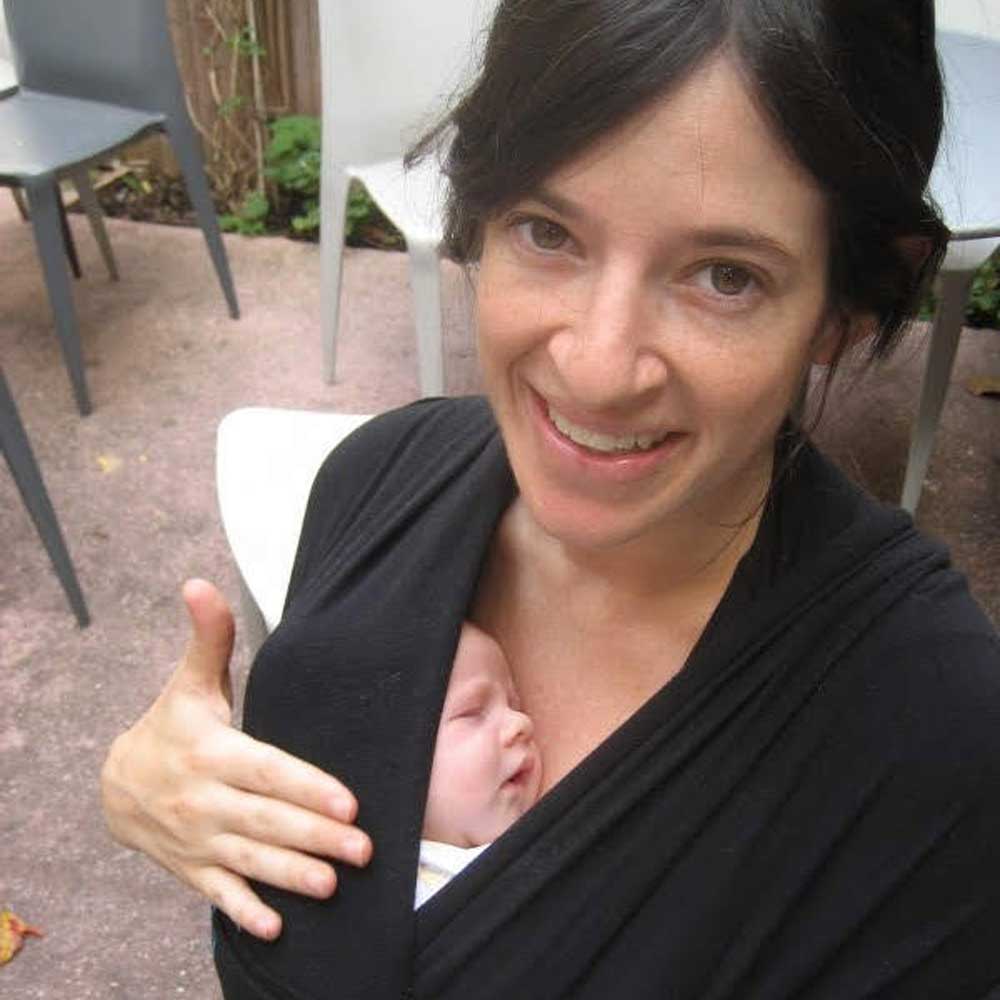Five Tips for Raising a Flexible Sleeper

You’ve likely read lots about sleep training. There are a million methods and many people swear by it or feel like they’re “supposed” to do it. Sleep training is not the right fit for everyone and often runs counter-intuitive to many parents’ gut instincts.
There’s also something we call Flexible Sleeping, where babies learn to fall asleep in multiple ways. This generally means that napping may take place in different locales each day, sometimes on your body in a baby carrier, sometimes in a stroller, sometimes (most often) in their bassinet/co-sleeper/crib.
While some parents thrive on having very scheduled lives, others are more spontaneous. If you can’t bear the thought of being tied to your home every time your baby takes a nap, or if you travel a lot, check out these strategies that will help you try raise a baby who can sleep anywhere.
(Note that I use the word “try.” It’s possible that you are the most spontaneous people in the world but you gave birth to a human who really needs a highly predictable routine. Some babies are more adaptable than others and can learn multiple routines. The most important thing is to observe your baby, check in with your gut, and then make adjustments as needed.)
Introduce different sleep locations early on
Bring a bassinet to grandma’s. Having a great time at your friend’s house and don’t want to go home? Sleepover! Try a hotel here and there.
Create a routine
Try singing the same song, or saying something like “Now we’re going to go to sleep,” to help cue the fact nap time is beginning, no matter where you are. If you nurse your baby to sleep at home, expect to do the same while you are out and about. Lowering lights, speaking in soothing tones all let the child know that sleep will be expected soon.
Try a sleep-based soother (like white noise or a lovey or certain books) with you when you travel to help cue sleep. Remember the less physical sameness you require and the more you practice sleeping in different locations, the easier it becomes.
Attempt to avoid overtiredness
It can be easier said than done when you’re on the go, but try to read your baby’s sleepiness cues. If necessary, excuse yourself from the activity you are participating in to put your baby to sleep. Or if this is a nap that will be done in a baby carrier or a stroller, you may find that stepping away from the event and walking your baby to sleep in a quieter place may work better.
Stay safe when on-the-go sleeping
Angled strollers, swings, car seats are not meant for permanent baby sleep. If your baby has fallen asleep in a car seat or in a stroller that’s not flat, the American Academy of Pediatrics stresses that you must move your child to a safe sleeping surface once you arrive at your destination. Leaving your baby to sleep in a car seat or stroller that does not have a flat bassinet may allow their head to tip too far forward, constricting their airway and reducing oxygen flow.
Always place your baby on their back to sleep as soon as you arrive at your destination. If you are in a hotel or someone else’s home, be sure that there is a current, to code, sleep option like a bassinet or crib with a fitted sheet only and absolutely nothing else (no stuffed animals, etc.).
Many parents swear by babywearing for naptimes due to the increased snuggliness, and benefits of close bonding, breathing regulation for baby, and increased flexibility for parents. If you’re wearing your baby, the baby should be vertical, in an upright position, and you must ensure that the baby remains at “kissable height,” meaning you can kiss the top of your baby’s head in the baby carrier. You must always be able to see their mouth and nose. Learn more about safe babywearing here and check out this checklist for safe babywearing by the school of babywearing.
We also recommend that you talk with your pediatrician about safe on-the-go sleep practices.
Observe what works—and what doesn’t
How do you know Flexible Sleeping is working for your child? Super short naps, meltdowns happening in the afternoon, and a wired (overtired) baby who’s having trouble falling asleep at night may all be signs that your baby may need a little longer, settled at-home sleep. If your baby seems happy and rested later in the day and you’re still able to do a routine bedtime most evenings when you’re home, then Flexible Sleeping may be a good fit for your child.